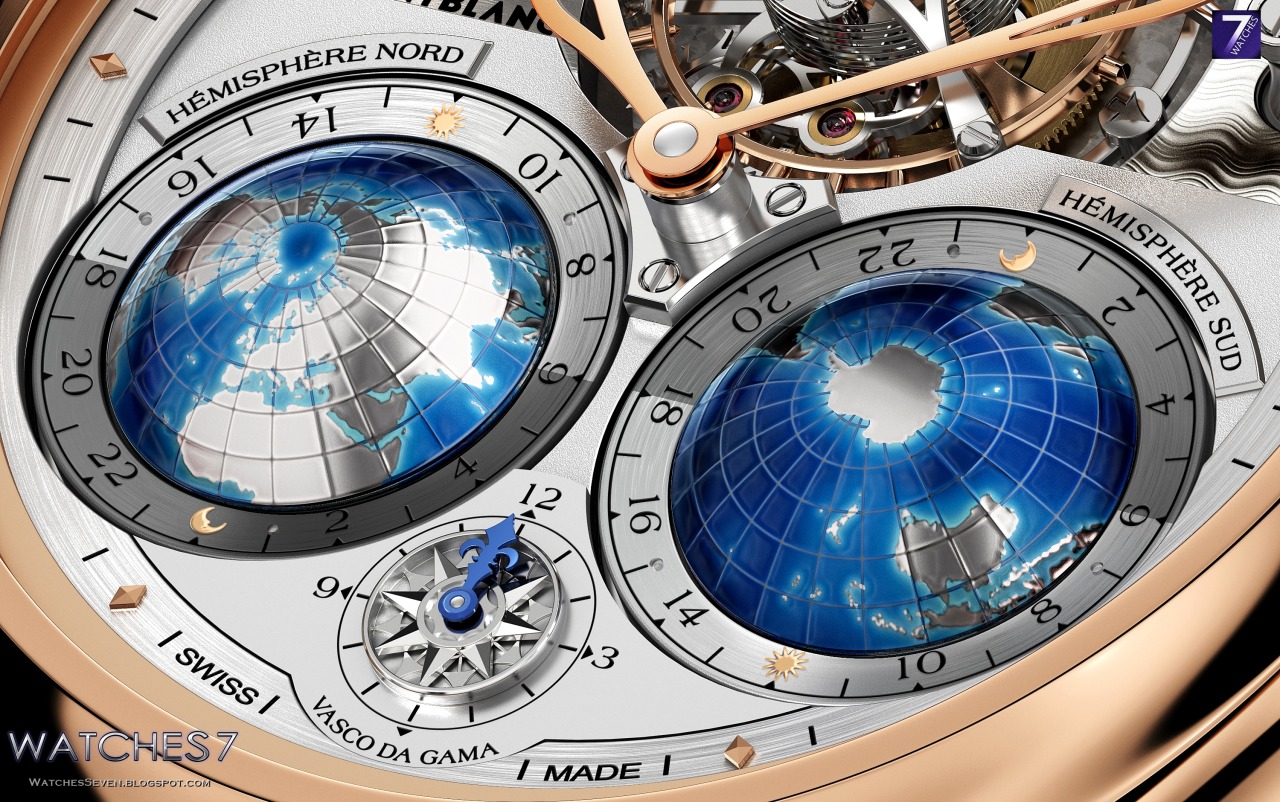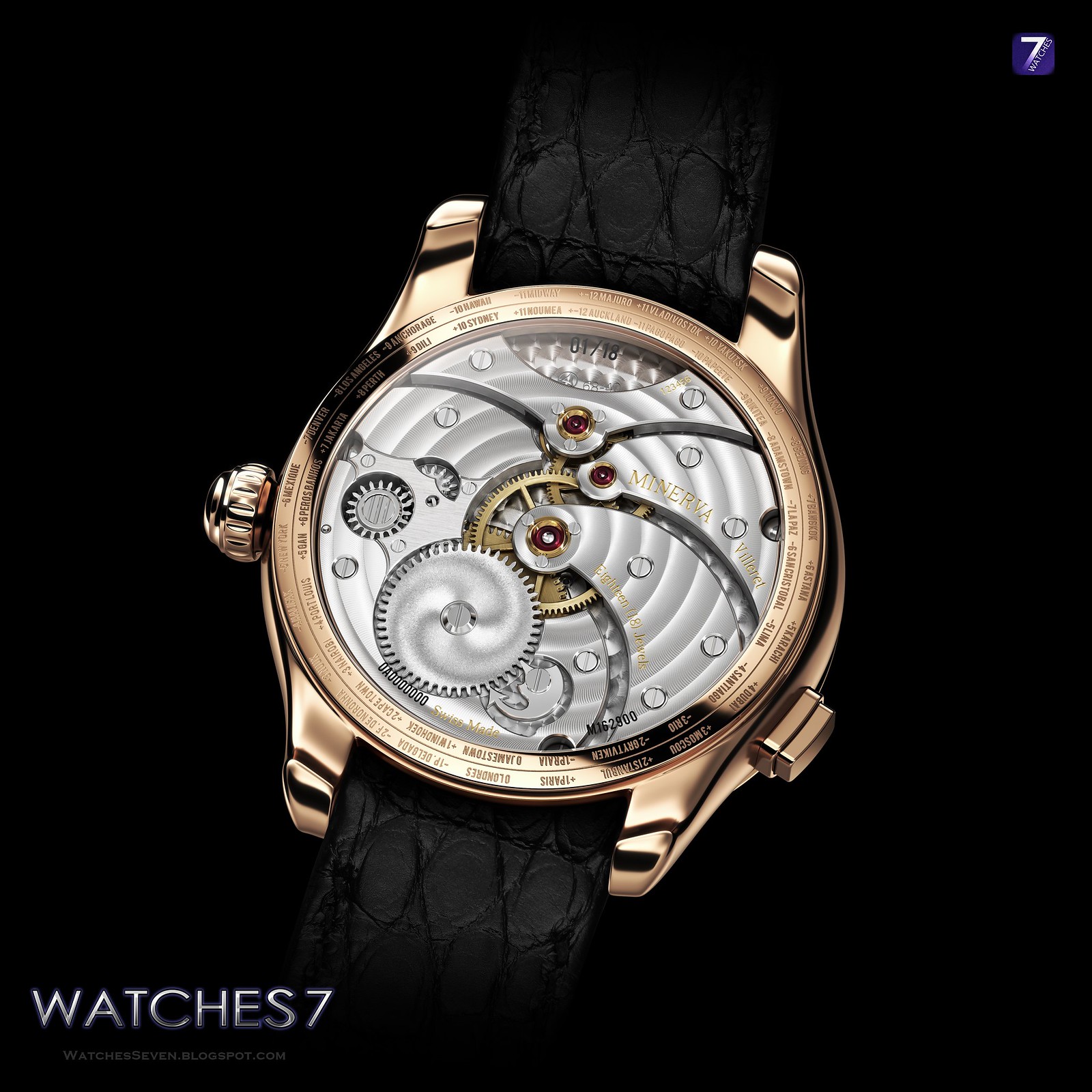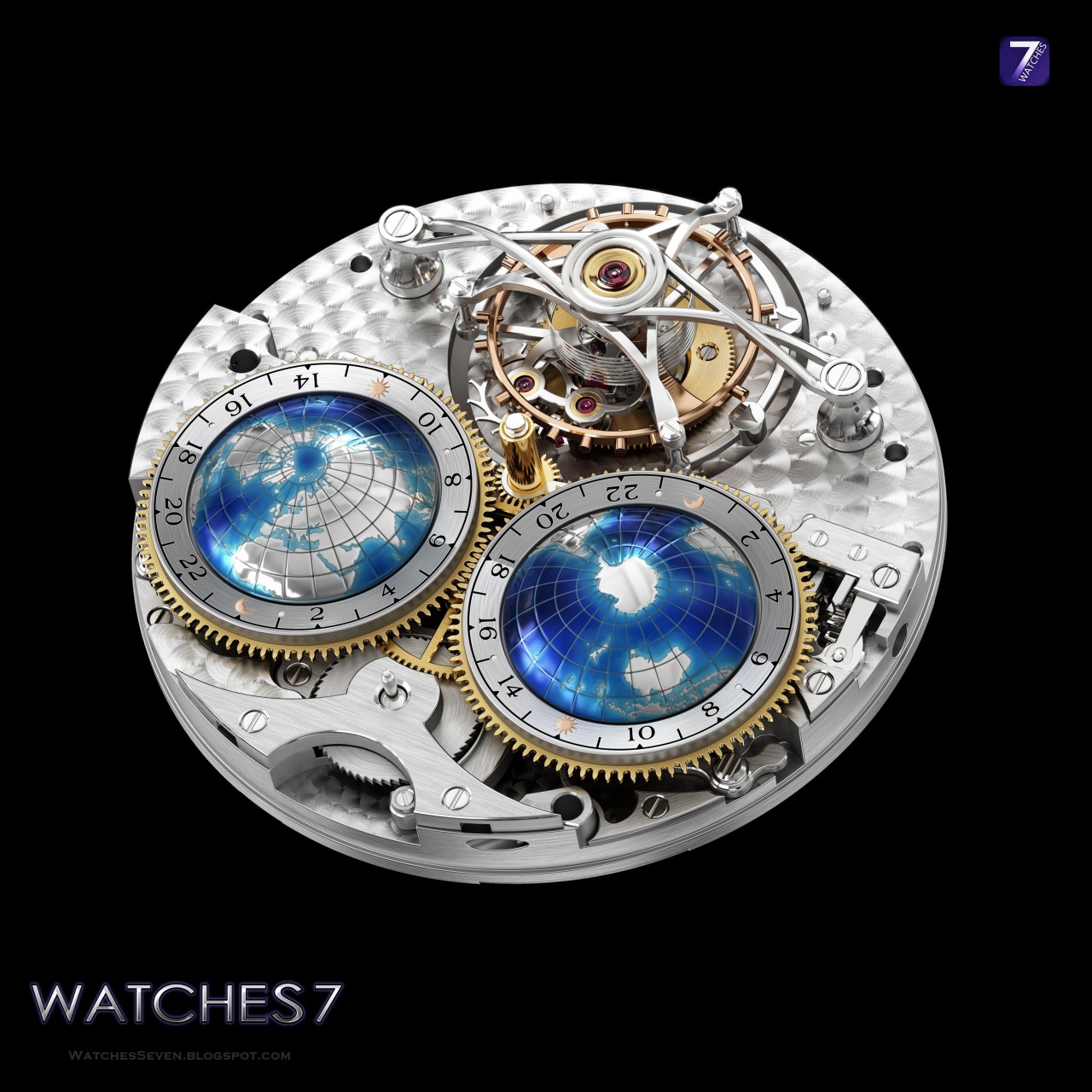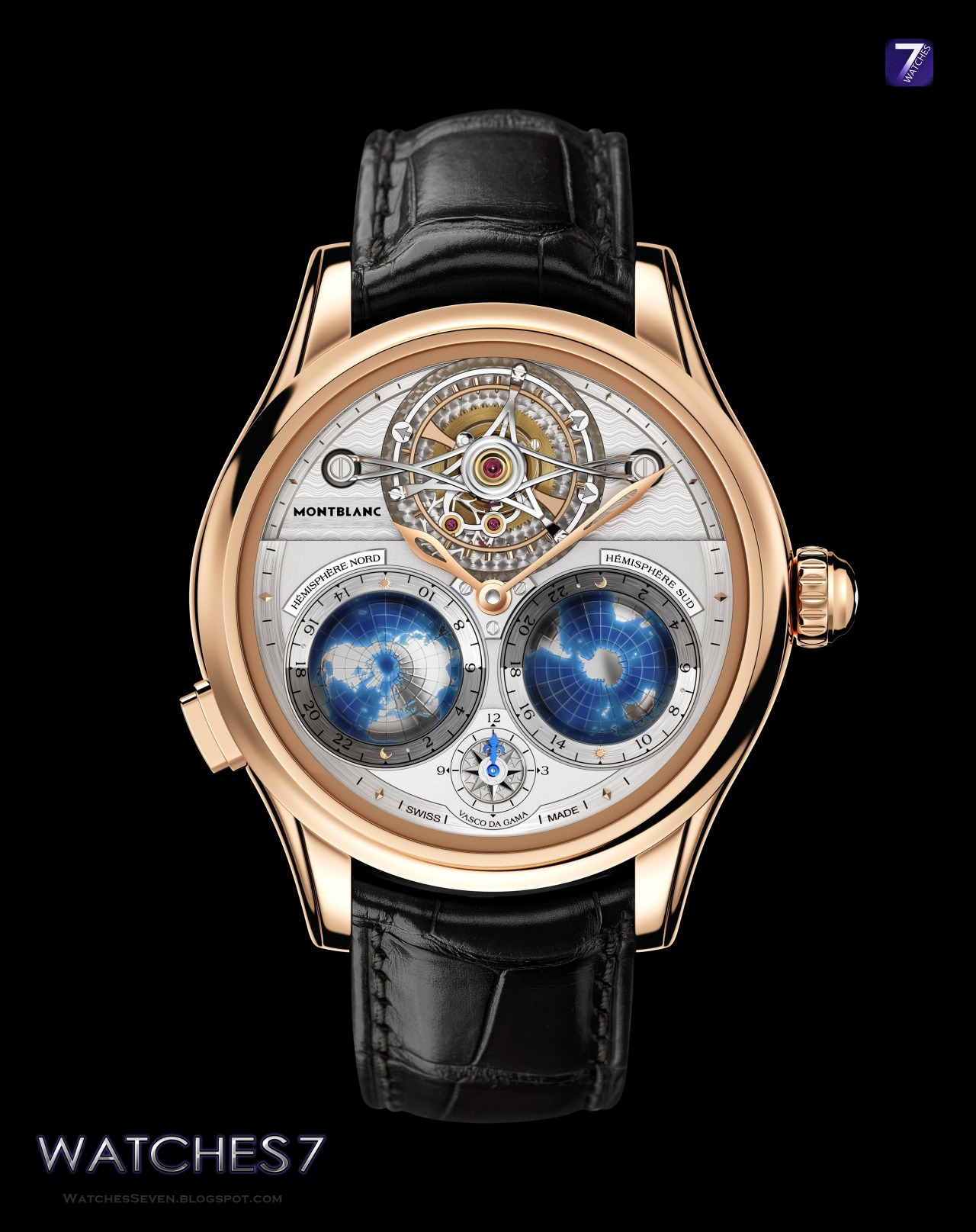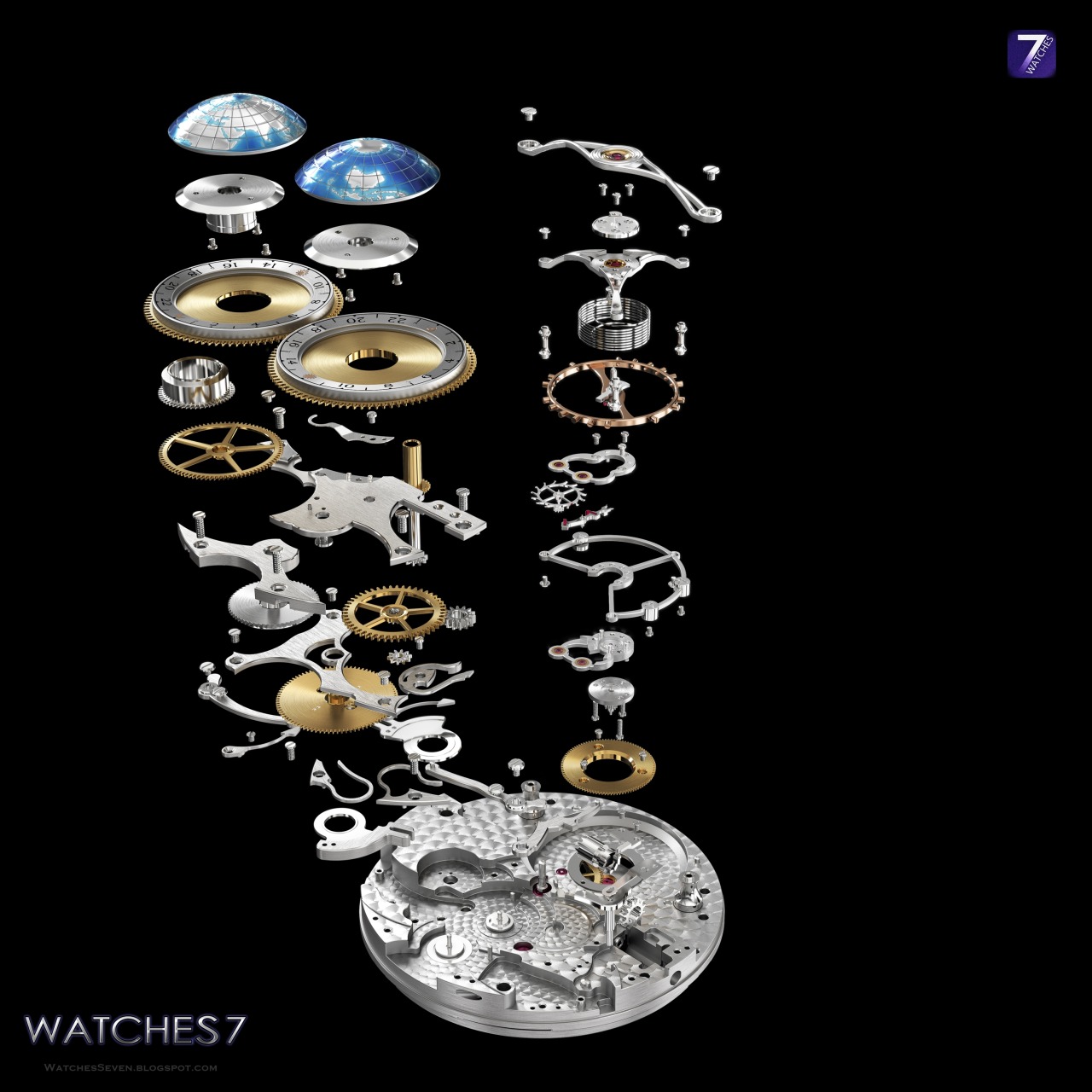MONTBLANC – VILLERET Tourbillon Cylindrique Geosphères Vasco da Gama Limited Edition NEW
A Voyage into Unchartered Territories of the Watchmaking World
The pioneering spirit of the Montblanc Manufacture in Villeret
honours the legacy of one of history’s greatest explorers. For 157
years, Villeret’s master watchmakers have practiced traditional Swiss
watchmaking with the same combination of innovation, precision and
determination that guided Vasco da Gama on his historic expedition.Uninterrupted and unique artisanal production in strict accordance with traditional Swiss craftsmanship distinguishes Montblanc’s Manufacture in Villeret. Scarcely anywhere else on Earth is impassioned craftsmanship pursued as single-mindedly as it is at the Manufacture in the St. Imier Valley. Since 1858, the valley’s artisanal watchmakers have created elaborate mechanical movements from components that they personally craft step by painstaking step until achieving the highest quality and the ultimate refinement.
Now their voyage into uncharted territories of the watchmaking world continues with the Tourbillon Cylindrique Geosphères Vasco da Gama, a timepiece with the unprecedented combination of a cylindrical tourbillon and unique triple time zone indication. Strictly limited to eighteen pieces, the Tourbillon Cylindrique Geosphères Vasco da Gama is a revolutionary wristwatch that pushes the boundaries of fine watchmaking with the utmost performance and spectacular artisanal beauty.
Click on the mouse wheel to see the large size ... BIG FOTO
The Discoverer
Vasco da Gama set sail from Lisbon’s Restelo harbour on 8 July 1497 with a small fleet of four ships. His flagship was the nau (carrack) Sao Gabriel with a crew of 60 men. The vessel weighed 120 tonnes, was 27 metres long and 8.5 metres wide, had a draught of 2.3 metres, and could raise a total sail area of 372 square metres. Vasco da Gama’s destination was the coast of India. If his expedition succeeded, he would become the first seafarer to find a southern seaway to India. Nowadays we know that he did indeed succeed. This enabled him to bypass Arabian, Persian, Turkish and Venetian middlemen who had made it extremely expensive for Europeans to import precious stones and valuable spices such as pepper. With this voyage and subsequent expeditions, Portugal fortified its predominance as a seafaring and trading nation. The success of Vasco da Gama’s expedition can ultimately be credited to its commander’s courage, thirst for action, willingness to take risks and, above all, his obsession with precision – a trait that is equally important in fine watchmaking today.
The fleet reached Saint Helena Bay on the southwest coast of Africa on 4 November 1497. Several days later, the three Portuguese ships sailed in a large arc around the Cape of Good Hope and landed in Mosselbaai on 25 November. Vasco da Gama finally reached India at a point near Calicut on the Malabar Coast on 20 May 1498. For the first time ever, European sailing ships had voyaged to India via a sea route around the southern tip of Africa. Fully laden with a bountiful cargo of precious spices, Vasco da Gama’s fleet began its homeward voyage to Portugal on 8 October 1498. The first ship in his fleet reached its homeland on 10 July 1499. Vasco da Gama himself landed in Lisbon on 9 September, where a triumphal reception was prepared for him. With this expedition, Vasco da Gama became the first European to establish a sustainable and safe way to travel from Europe to India and thus built a bridge between the Northern and Southern Hemisphere. His feat connected people’s lives on both hemispheres for centuries, not only geographically but also commercially and culturally. The Montblanc Villeret Tourbillon Geosphères pays homage to this great explorer and likewise builds a bridge between the two hemispheres – on the stage of a wristwatch.
Montblanc Tourbillon Cylindrique Geosphères Vasco da Gama
For many years, Montblanc and its Manufacture in Villeret have presented unique timepieces that express the comprehensive skills of the artisans at this time-honoured Manufacture. Now the developers and watchmakers have once again employed all their expertise to create a wristwatch that is quite literally the ticking “flagship” of the new Montblanc Vasco da Gama watch collection. It was Vasco da Gama’s urge to discover new worlds and his unwavering courage that inspired Montblanc and spurred the Manufacture’s watchmakers to achieve superlative horological feats.
Far more than merely a complicated wristwatch, the Tourbillon Cylindrique Geosphères Vasco da Gama also performs an unconventional horological performance. The 47-mm-diameter case surrounds a three-dimensional dial that positively invites admiring scrutiny. The 281 components that comprise hand-wound tourbillon Calibre MB M68.40 support numerous functions in an unprecedented combination: a triple time zone with local time is displayed in the form of hours and minutes; the continually running and independently adjustable display for the home time is presented on a three-dimensional twelve-hour compass rose at “6 o’clock”; and a pair of globes depict the World´s 24 time zones in the Northern and Southern Hemisphere, along with the passage of the days and nights. Engraving and miniature painting on these two halved balls indicate in relief the outlines of the continents, their borders and the oceans that separate them. The passage of time accordingly becomes an impressive and daily recurring spectacle on the wearer’s wrist and recalls the sea route through the Earth’s two hemispheres that Vasco da Gama sailed in 1497.
The Dial
The 18-karat gold dial is constructed in various parts and on different levels. Inspired by the twin distinctive globes, Montblanc’s designers relied on round shapes and rounded décor. The upper part of the dial is the stage for the tourbillon with its arcing, convex, polished tourbillon bridge. The guilloché embellishment is crafted accordingly: manually executed guilloché, which adorns the components to the left and to the right of the tourbillon mechanism, is applied in a wavy décor inspired by Vasco da Gama’s voyage across the world’s oceans. The lower portion of the dial is the arena for the two globes and the home-time indication in the form of a three-dimensional compass rose. The hand that sweeps above this rose to indicate the hours is likewise styled in a “Fleur-de-Lys” shape.
The Globes
The globes illustrate the passage of the days and nights in the Northern and Southern Hemisphere. Their elaborately crafted and finely detailed design also shows the circles of latitude and longitude. The two globes are motionlessly affixed to the movement, while two 24-hour worldtime indicator discs with the day/night rotate once per day around them.
Click on the mouse wheel to see the large size ... BIG FOTO
The disc for the Northern Hemisphere turns clockwise; its counterpart for the Southern Hemisphere rotates anticlockwise. This arrangement enables the watch’s wearer to view, in the course of a single day, the sunlit halves of the two globes and the halves that are currently turned away from the sun. With the aid of the meridians of longitude, the viewer can read the current hour in any desired part of the world by following the 24-hour world-time display on the two discs.
The Compass Rose
The continually running and independently adjustable display for the home time at “6 o’clock” on the dial of the Tourbillon Cylindrique Geosphères Vasco da Gama is inspired by the gigantic marble compass rose at the base of the Padrão dos Descobrimentos. This monument, which commemorates Portuguese discoverers, stands in the civil parish of Belém in Lisbon. Comparable to a miniature sculpture, the watch’s compass rose is composed of four parts, each of which is entirely handmade and manually decorated.
Click on the mouse wheel to see the large size ... BIG FOTO
The Tourbillon
Montblanc developed the 281-part hand-wound Calibre MB M68.40 featuring a 91-part tourbillon mechanism with a cylindrical hairspring which guarantees a power reserve of 48 hours. The balance’s frequency is 18,000 semi-oscillations per hour (2.5 hertz). Thanks to its 14.5-mm diameter, the balance’s moment of inertia is an 59 mgcm². Few manufactures nowadays employ artisans with the necessary know-how and craftsmanly skills to fabricate their own balance wheels and hairsprings. Without these abilities, Montblanc could never have developed the cylindrical hairspring for the Tourbillon Cylindrique Geosphères Vasco da Gama.
Click on the mouse wheel to see the large size ... BIG FOTO
Unlike their flat counterparts, cylindrical hairsprings were regarded as the summum bonum andinstalled only in the finest and costliest marine chronometers. Valuable ship’s chronometers were indispensable for seafarers because only with the aid of a clock that continued to show the correct time with great accuracy for a lengthy period of time were mariners able to determine their longitude on the high seas. Today too, a cylindrical hairspring continues to embody the utmost precision. Like a conventional balance-spring, a cylindrical balance-spring is a concentrically wound strip of elastic metal; however instead of being wound side by side, at increasing distances from a common centre and all on the same plane, its individual turns are all of equal diameter and are wound one atop the other. This eliminates the slight eccentricity of the centre of gravity, which has always been the Achille’s heel of conventional balance-spring.
Click on the mouse wheel to see the large size ... BIG FOTO
The challenges for Montblanc’s watchmakers were to miniaturize this type of hairspring and to install it in the tourbillon mechanism of a wristwatch. The extremely high degree of in-house fabrication at the Montblanc Manufacture in Villeret, combined with the expertise accumulated here over many years, enabled these specialists to create more than merely a “simple” cylindrical hairspring, but to further equip it with two Phillips terminal curves. The upward curvature at each end of the spiral contributes toward significantly improving the regularity of the hairspring’s “breathing,” thus further reducing the isochronism error. Montblanc accordingly achieved for this masterpiece a highly accurate rate.
Incomparable beauty distinguishes the styling of the doubly curved, three-dimensional, endless loop of the tourbillon bridge, beneath which the tourbillon’s large cage completes one rotation around its own axis every sixty seconds. For the Tourbillon Cylindrique Geosphères Vasco da Gama, Montblanc’s typical tourbillon bridge departs for the first time from its usual planar shape and acquires a convex form. It thus perfectly harmonizes with the two globes on the dial. A master watchmaker requires more than seven days to entirely handcraft this distinctive tourbillon bridge and to give it an absolutely immaculate polished finish.
The Operation
The indicators on the Tourbillon Cylindrique Geosphères Vasco da Gama can be set via the crown, the visible pusher at “8 o’clock” and the inset corrector on the case’s flank at “4 o’clock”. After pulling the crown outward, the user can set the local time and simultaneously adjust the worldtime display along the two globes’ 24-hour scales. The corresponding buttons on the case are used to finely adjust the local time in the centre and the home time on the compass rose at “6 o’clock”, which runs along with the local time.
Click on the mouse wheel to see the large size ... BIG FOTO
Once all indicators have been correctly synchronized, a new local time in a different time zone can be set simply by pressing the push-piece at “8 o’clock”. Operating this pusher advances only the hour-hand in single-hour increments; it does not affect the minutes, which are shown from the dial’s centre, nor does it alter the home time at “6 o’clock” or the two displays along the globes. When the watch’s owner is travelling, he or she can conveniently read the local time by referring to the hour- and minute-hand in the centre, check the home time at “6 o’clock” and see the hour anywhere else in the world by referring to one of the two 24-hour discs around the globes.
The Case
Montblanc’s 16¾-line Calibre MB M68.40 is embedded in a 47-mm-diameter and 15.38-mm-height red gold case. The wristband is made of alligator-skin on both sides and is affixed between two pairs of rounded, elaborately hand-polished horns. The names of 24 cities in the Northern Hemisphere and another two dozen metropolises in the Southern Hemisphere are engraved along with the matching time zones on the back of the case. The limitation numbers from “01/18” to “18/18”, the serial number and the reference numbers are engraved on the sapphire crystal in the back of the case.
Click on the mouse wheel to see the large size ... BIG FOTO
The Montblanc Manufacture Villeret in Switzerland’s Jura Region
A watch manufacture typically falls into one of two categories: it’s either a new manufactory that fabricates timepieces according to ultramodern techniques or it’s a time-honoured atelier where watches are built in strict compliance with traditional methods as though time had simply stood still. Only a few of the latter sort continue to operate today. One of them is the Montblanc Manufacture, which was formerly the Miverva Manufacture, at Villeret in Switzerland’s Jura Region. The past 157 years in Villeret were characterized by the striving to produce unique timepieces which embodied complications that were consistently ahead of their time. These watches were built in accord with traditional horological methods, so the manufacture remained almost entirely unaffected by the industrial revolution. Enriched by many years of traditional expertise, the good old craft of watchmaking predominated and the foreground was invariably occupied by the watchmakers themselves rather than by soulless, computer-guided machinery that mindlessly repeated its assigned chores. This reliance on classical horological tradition and its pursuit on the highest level are unique features that distinguish the Montblanc Manufacture in Villeret today. Watch collectors and aficionados are again eagerly seeking precisely these qualities in technically sophisticated timekeeping mechanisms that have been crafted in the highest quality and with the utmost meticulousness. These attributes fully do justice to the true meaning of the word “luxury” – because limitations at the Montblanc-Minerva Manufacture do not result from mere coincidence, but solely through the exclusive limits imposed by the annual production capacity.
----------------------------------------------------------
TECHNICAL SPECIFICATIONS
Montblanc Collection Villeret Tourbillon Cylindrique Geosphères Vasco da Gama
Ident.111675
Movement Montblanc Manufacture Calibre MB M68.40
Type of movement Hand-wound mechanical movement with one-minute tourbillon and cylindrical hairspring; triple time zone with local-time, home time and worldtime indication
Dimensions 16¾ lines (38.40 mm); height = 10.50 mm
No. of components 281, including 91 for the tourbillon cage
No. of rubies 18
Power reserve Approx. 48 hours
Balance Screw balance, diameter = 14.5 mm, moment of inertia = 59 mgcm²
Frequency 18,000 semi-oscillations per hour (2.5 Hz)
Hairspring Cylindrical hairspring with double Phillips terminal curves
Tourbillon One-minute tourbillon with cylindrical hairspring
Main plate Rhodium-plated nickel silver with circular graining on both sides
Bridges Rhodium-plated nickel silver with côtes de Genève
Going-train Gold-plated, faceted arms, diamond-polished surfaces
Watch displays Local time: central hours and minutes in the centre, Home time: hour hand at “6 o’clock”, Worldtime: 24-hour time zones with day/night for the Southern and Northern Hemisphere
Habillage
Case 18-karat red gold (5N)
Crystal Scratch-resistant, domed sapphire crystal with antireflective treatment on both surfaces
Back 18-karat red gold (5N) back with 24 cities of both hemispheres engraved and with inset pane of sapphire crystal
Dimensions Diameter = 47 mm, height = 15.38 mm
Watertightness 3 bar
Dial 18-karat gold hands, hand-guilloché wave decoration around the tourbillon cage and “grainé” pattern on the lower part, tourbillon with cylindrical hairspring and double-infinity bridge. Worldtime indication on two discs with 24-hour time zones with day and night indication revolving around two fixed globes with traditional hand-painted peinture miniature for the oceans and engraving for the continents and the meridians showing the Northern Hemisphere on the left and the Southern Hemisphere on the right. Home-time indication at “6 o’clock” above a three-dimensional handcrafted rose des vents subdial; 18-karat red gold hour- and minute-hand in the centre, blued “Fleur-de-Lys” home-time hand at “6 o’clock”
Crown 18-karat red gold (5N) crown with Montblanc’s emblem in mother-of-pearl
Pusher Local-time pusher at “8 o’clock” and home-time corrector at “4 o’clock”
Strap Hand-sewn black alligator-skin strap with alligator lining and with a folding clasp made of 18-karat red gold (5N)
Limitation 18 pieces
Price 250.000 euros including 19% VAT in Germany
-------------------------------------------
www.facebook.com - Montblanc
------------------------------------------------------
www.Montblanc.com



